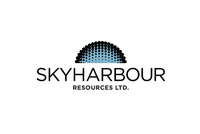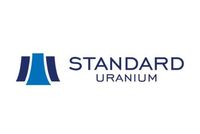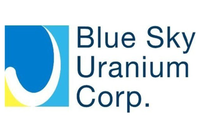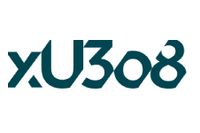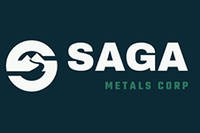A Dundee Securities analyst believes that the uranium market has hit its bottom. More positively, prices are seen climbing this year and into 2013 as Japanese reactors come back to life and the Megatons to Megawatts program expires.
Unchanged from last week, TradeTech is reporting a uranium spot price of $49 per pound. However, the consulting firm says “[a]ctivity … is on the upswing, with four transactions reported for this week, signaling that prices have dipped low enough to attract buying interest.”
David Talbot, senior mining analyst at Dundee Securities, believes we’re now witnessing the bottom of the market. In an interview with The Energy Report, Talbot said he expects prices to firm up later this year and into next year as Japanese reactors come back to life and the Megatons to Megawatts program expires.
“The supply/demand balance in the mid-to-near-term may impact pricing,” Talbot said. “The current supply deficit should put upward pressure on prices, eventually making projects … more feasible. We’ll be lucky if annual uranium production reaches 180 Mlb by 2020. And that would require sustained spot prices of $70-80/lb. Our current forecasts for next year and 2014 are $70/lb and $67/lb, with a long-term forecast [of] $65/lb.”
According to TradeTech’s most recent report, it is still to soon to tell whether prices have bottomed. It states, “[w]hile lower prices have generated some additional buying interest, this demand is extremely price sensitive and any increase in offer prices causes buyers to retreat.”
In other market news, Kazatomprom announced that it will increase its stake in Kazakhstan’s uranium reserves from 41.8 percent to 52 percent by December of this year. The atomic company, which is the nation’s uranium importer and exporter, has been buying up shares in joint ventures and plans to increase its reserves by 250,000 tons by 2020. Kazakhstan is the world’s leading uranium producer, with about 35 percent of world production for a total of 19,450 tonnes in 2011, according to the World Nuclear Association.
Company news
Making headlines this past week is France’s Areva (EPA:AREVA). The world’s biggest nuclear plant manufacturer inked a uranium supply agreement with the United Arab Emirates’ (UAE) Emirates Nuclear Energy (ENEC). Under the $491.3 million agreement, Areva will supply enriched uranium for eight years to four of ENEC’s planned reactors at the Barakah plant in Western Abu Dhabi. The UAE will be the first Gulf Arab state to build a nuclear power plant. State-owned ENEC expects to begin electricity production at Barakah by 2017.
Last week, Areva announced that following a six-year review the Canadian government has approved the environmental assessment of the company’s proposed Midwest uranium project, located in the Athabasca Basin in Saskatchewan. The project holds an indicated resource of 42.9 million pounds U308 and is a joint venture between Areva Resources Canada (69 percent), Denison Mines (TSX:DML) (25 percent) and Japanese investment group OURD Canada Company (6 percent).
On Monday, miners at Areva’s Somair uranium mine in Northern Niger, the top supplier to France’s nuclear energy industry, went on strike over labor conditions. The strike was short-lived, ending Tuesday as miners and management resumed negotiations; however, a labor spokesman said workers may strike again after Friday if “authorities” do not “keep their promises,” stated Reuters. The mine produces 2,650 tonnes of uranium annually.
Paladin Energy (TSX:PDN,ASX:PDN) announced last week that it has signed a six-year, long-term off-take contract with an unnamed major utility that includes a pre-payment of $200 million no later than January 31, 2013. The deal includes delivering 13.73 million pounds of U308 starting in 2019. The news pushed the company’s shares up 19 percent.
“It’s a big positive for Paladin as it removes near-term liquidity concerns,” Haris Khaliqi, an equity research analyst at Sydney-based Foster Stockbroking, told The Australian. “Moreover, our view is that there’s definitely going to be a supply gap for uranium from 2014 onwards and this is the first confirmation that major utilities are looking to lock in long-term supply, and on terms that appear more favorable to the actual producers.”
Ur-Energy (TSX:URE,AMEX:URG) announced on August 17 that the Bureau of Land Management (BLM) released the final environmental impact statement (EIS) for the company’s proposed Lost Creek uranium project in Wyoming, which it anticipates will commence production in late spring or early summer of 2013.
“I am extremely pleased to share news of this significant development for Ur-Energy’s flagship project. The completion of the Final EIS by the BLM marks the start of a very exciting time for Ur-Energy and its shareholders,” said Wayne W. Heili, Ur-Energy’s president and CEO, in a press release. “During the next 30 days our technical team and general contractor will be finalizing schedules and logistics for ground breaking and the commencement of construction activities at the project site.”
Australia-based Aura Energy (ASX:AEE) has entered into an exclusivity agreement with “a major uranium market participant” to investigate a potential joint venture that would provide funding for feasibility work at Aura’s Häggån project in Sweden in return for an equity stake in the project. “It should be stressed that discussions remain at any early stage and there can be no assurance that a binding agreement will be executed. Aura will provide further updates on the process in due course,” the company stated.
Securities Disclosure: I, Melissa Pistilli, hold no direct investment interest in any company mentioned in this article.


